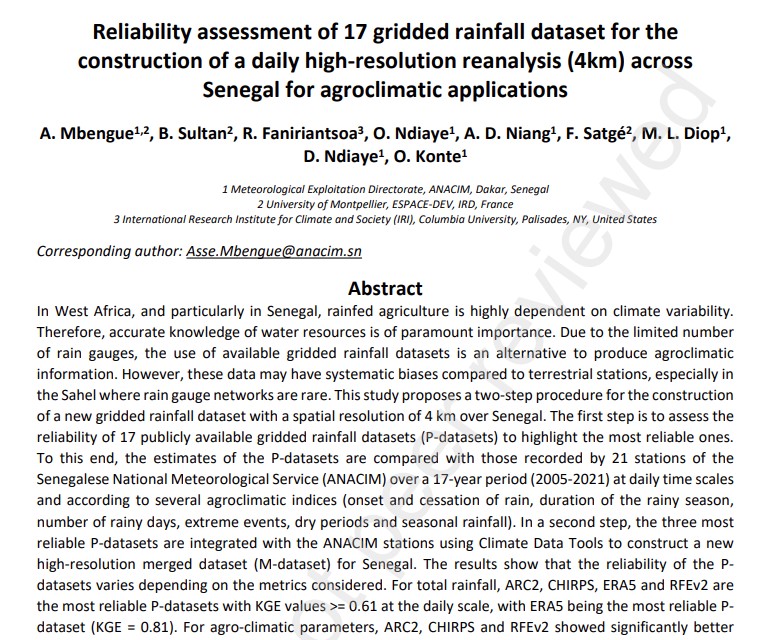ABSTRACT
In West Africa, and particularly in Senegal, rainfed agriculture is highly dependent on climate variability. Therefore, accurate knowledge of water resources is of paramount importance. Due to the limited number of rain gauges, the use of available gridded rainfall datasets is an alternative to produce agroclimatic information. However, these data may have systematic biases compared to terrestrial stations, especially in the Sahel where rain gauge networks are rare. This study proposes a two-step procedure for the construction of a new gridded rainfall dataset with a spatial resolution of 4 km over Senegal. The first step is to assess the reliability of 17 publicly available gridded rainfall datasets (P-datasets) to highlight the most reliable ones. To this end, the estimates of the P-datasets are compared with those recorded by 21 stations of the Senegalese National Meteorological Service (ANACIM) over a 17-year period (2005-2021) at daily time scales and according to several agroclimatic indices (onset and cessation of rain, duration of the rainy season, number of rainy days, extreme events, dry periods and seasonal rainfall). In a second step, the three most reliable P-datasets are integrated with the ANACIM stations using Climate Data Tools to construct a new high-resolution merged dataset (M-dataset) for Senegal. The results show that the reliability of the Pdatasets varies depending on the metrics considered. For total rainfall, ARC2, CHIRPS, ERA5 and RFEv2 are the most reliable P-datasets with KGE values >= 0.61 at the daily scale, with ERA5 being the most reliable Pdataset (KGE = 0.81). For agro-climatic parameters, ARC2, CHIRPS and RFEv2 showed significantly better performance than all other P-datasets (including ERA5) in representing the start (KGE >= 0.45) and end (KGE >= 0.39) dates of the rainy season. In general, P-datasets are not reliable for identifying dry spells and tend to overestimate rainfall events. The best average performances for all evaluation indicators were obtained for ARC2 (KGE = 0.32), RFEv2 (KGE = 0.30), CHIRPSv.2 (KGE = 0.30), TRMM (KGE = 0.29) and IMERG-FR (KGE = 0.26), which occupy the top 5 positions among the 17 P-datasets. Finally, the new M-dataset provided the most reliable daily rainfall estimates with more than 100% improvement in correlation for daily estimates and reduced bias of 99.19% for ARC2, 80% for CHIRPS and 90.57% for RFEv2 for daily estimates. The results of this study provide important information for the selection of the most appropriate dataset for the development of climate information for decision support.
